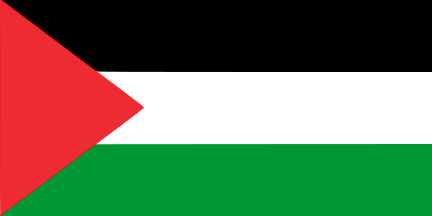Palestine (Disputed) History


The Oslo Accord, Government Corruption, and a "Road Map" to Peace
In 1993, highly secretive talks in Norway between the PLO and the Israeli government resulted in the Oslo Accord. The accord stipulated a five-year plan in which Palestinians of the West Bank and the Gaza Strip would gradually become self-governing. On Sept. 13, 1993, Arafat and Israeli prime minister Yitzak Rabin signed the historic “Declaration of Principles.” As part of the agreement, Israel pulled out of the Gaza Strip and Jericho in the West Bank in 1994. The Palestinian Authority (PA), with Arafat as its elected leader, took control of the newly non-Israeli-occupied areas, assuming all governmental duties.
Intensive negotiations between Israel's prime minister Ehud Barak and Arafat in 2000 remained deadlocked over Israeli-occupied East Jerusalem, which Arafat insisted must be the capital of the future Palestinian state. At the end of September, however, the stalemate disintegrated into the worst violence between Israelis and Palestinians in years, provoked by Likud hard-liner Ariel Sharon's visit to the compound called Temple Mount by Jews and Haram al-Sharif by Muslims. The compound is a fiercely contested site that is sacred to both faiths. The intensified violence, which included an unprecedented number of Palestinian suicide attacks against Israeli civilians and the inevitable Israeli military reprisals, was dubbed the al-Aksa intifada. In four years (2000–2004), the intifada had led to the deaths of almost 4,000, including nearly 3,000 Palestinians.
For five months in 2002, Israeli troops surrounded Yasir Arafat at the Palestinian Authority headquarters in Ramallah. Prime Minister Sharon, blaming Arafat directly for inciting terror, called for his expulsion from the territories. Washington echoed Israel's view that Arafat had become “irrelevant” and announced that the U.S. would not recognize an independent Palestinian state until Arafat was replaced. Throughout the summer, Palestinian suicide bombings (Hamas and the Al-Aksa Martyr Brigade claimed responsibility for the majority of them) and Israeli reprisals continued. In March 2003, Arafat agreed to political reforms: his government, to the disillusionment of many Palestinians, was rife with corruption. He also agreed to share power with a prime minister. Mahmoud Abbas, second-in-command of the PLO, assumed the post in April. Unlike Arafat, Abbas emphatically rejected the Palestinian intifada, but he had no influence or control over Palestinian militant groups the way Arafat did. On May 1, the Quartet (the U.S., UN, EU, and Russia) unfurled its “road map” for peace, which called on both sides to make concessions and end the wave of deadly violence. But the road map quickly led nowhere; Abbas, with little real political power, could not disable terrorist organizations, and Israel did not dismantle settlements, much less prevent new ones from cropping up. Sharon also continued to build the controversial security barrier that divides Israeli and Palestinian areas. Abbas resigned in September, and Arafat appointed a new prime minister, Ahmed Qurei.







